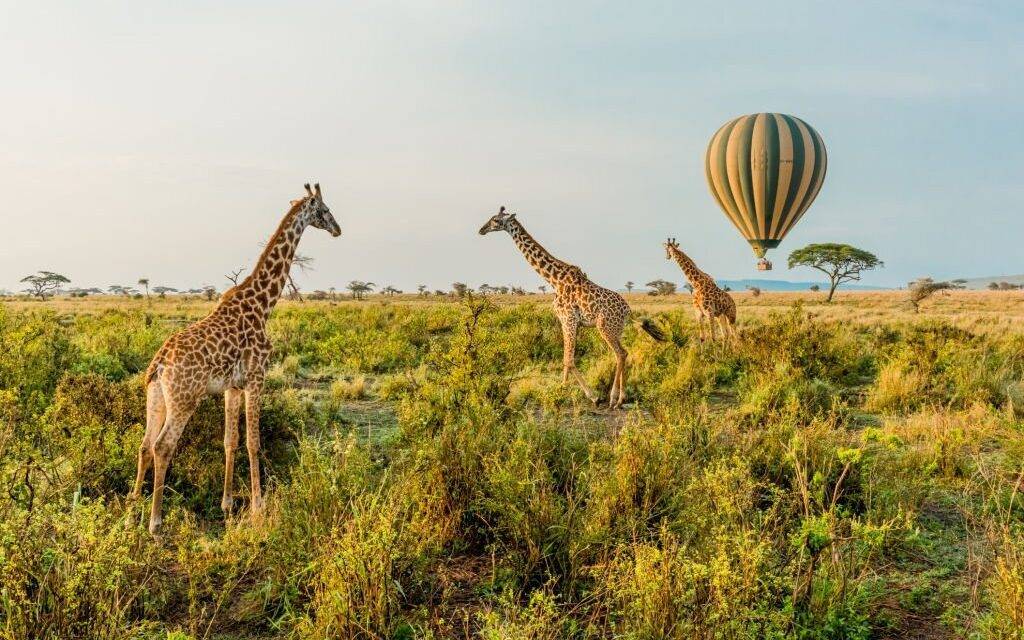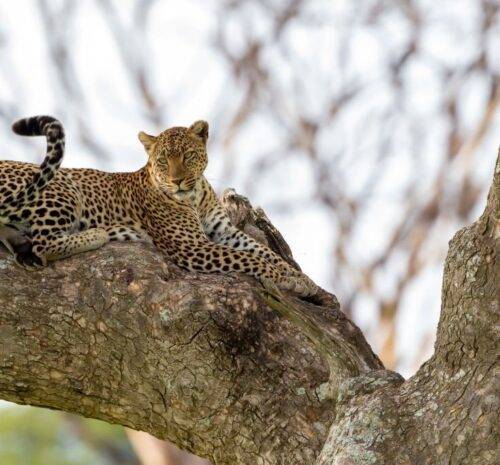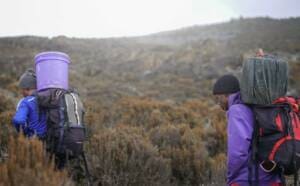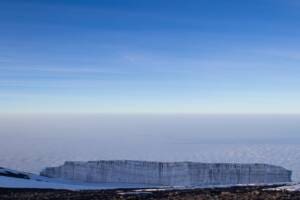Introduction
Serengeti National Park
Welcome to the breathtaking Serengeti National Park, one of the most iconic wildlife destinations in the world! Located in northern Tanzania, this vast wilderness area is home to an incredible diversity of wildlife, from huge herds of wildebeest and zebra to majestic lions, leopards, and elephants. Stretching over 14,750 square kilometers, the Serengeti is truly a natural wonder, offering visitors the chance to witness some of the most spectacular wildlife migrations on the planet. But it’s not just the animals that make this park so special – it’s also the stunning landscapes, from rolling savannah plains to ancient rock formations and towering acacia trees. Whether you’re a seasoned safari-goer or a first-time visitor to Africa, the Serengeti is a must-see destination that will leave you in awe of the beauty and majesty of the natural world. So grab your binoculars, hop in a 4×4, and join us on a journey through Tanzania’s spectacular wilderness!

Geography and Climate of Serengeti National Park
The Serengeti National Park is located in Tanzania, East Africa. It’s situated in the northern part of the country, adjacent to the Kenyan border. The park covers an area of 14,750 square kilometers, making it one of the largest national parks in Africa. The landscape of the park is diverse and includes open grassland plains, woodlands, hills, and rocky outcrops.
The park’s climate is tropical, with distinct wet and dry seasons. The wet season runs from November to May, with the heaviest rainfall being in December and April. During this period, the park is lush and green, and the wildlife is plentiful. The dry season, which runs from June to October, is characterized by sparse vegetation, making it easier to spot animals. The temperatures during the day can reach up to 30 degrees Celsius, dropping to around 15 degrees Celsius at night.
The best time to visit the Serengeti is during the dry season, from June to October, when the wildlife is most concentrated around the water sources. However, visiting during the wet season also has its advantages, as the park is less crowded, and the landscapes are green and beautiful.
Wildlife in Serengeti National Park
The Serengeti is home to an incredible diversity of wildlife, making it one of the best places in the world for safari. The park is famous for the “Big Five” – lions, leopards, elephants, rhinoceroses, and buffalos – but there are many more species to see. The park is home to over 500 bird species, as well as antelopes, hyenas, giraffes, zebras, cheetahs, and many more.
One of the most spectacular events in the Serengeti is the annual wildebeest migration, where over a million wildebeest, zebras, and gazelles travel in search of water and food. The migration is a sight to behold, with the animals crossing rivers and plains in search of greener pastures. The best time to witness the migration is between June and October, but the exact timing can vary from year to year.
The Serengeti is also home to the Maasai people, who have lived in the area for centuries, coexisting with the wildlife. Visitors can learn about their culture and traditions, as well as participate in cultural activities such as traditional dances and ceremonies.
The Great Migration of Serengeti National Park
The Great Migration is one of the most awe-inspiring natural events in the world, and the Serengeti is one of the few places where you can witness it firsthand. Every year, over a million wildebeest, zebras, and gazelles embark on a journey from the Serengeti in Tanzania to the Masai Mara in Kenya in search of greener pastures.
The migration is a dangerous journey, with predators such as lions, cheetahs, and hyenas waiting to prey on the weakest animals. The wildebeest cross crocodile-infested rivers and navigate through treacherous terrain, making it a thrilling experience to witness.
The best time to witness the migration in the Serengeti is between June and October when the animals gather around the Grumeti River and the Mara River. Visitors can watch the wildebeest crossing the river, or take a hot air balloon safari to get a bird’s eye view of the migration.
Activities to do in Serengeti National Park
There are many activities to do in the Serengeti, making it a destination for everyone, from adventure seekers to families. The most popular activity is a game drive, where visitors can explore the park in a 4×4 vehicle with a knowledgeable guide. Game drives can be done during the day or at night, giving visitors the chance to see different animals and landscapes.
For a truly unique experience, visitors can take a hot air balloon safari over the park, offering breathtaking views of the Serengeti from above. The balloon ride takes off early in the morning, giving visitors the chance to see the sunrise and witness the wildlife from a different perspective.
Visitors can also take guided walking safaris, where they can explore the park on foot, learning about the wildlife and the Maasai culture. Cultural activities such as visiting Maasai villages and participating in traditional dances are also available.
Tips for visiting Serengeti National Park
Visiting the Serengeti can be an unforgettable experience, but it’s important to be prepared. Here are some tips to make the most of your visit:
– Get a good camera with a telephoto lens to capture the wildlife up close.
– Pack warm clothing for the early morning and late evening game drives, as temperatures can drop significantly.
– Bring insect repellent, as mosquitoes and other insects can be a nuisance.
– Follow the park rules and guidelines, such as not getting out of the vehicle during game drives and not feeding the animals.
– Respect the wildlife and their habitats, and avoid disturbing them.
Best time to visit Serengeti National Park
The best time to visit the Serengeti is during the dry season, from June to October, when the wildlife is most concentrated around the water sources. However, visiting during the wet season also has its advantages, as the park is less crowded, and the landscapes are green and beautiful.
The timing of the wildebeest migration can vary from year to year, but it usually takes place between June and October, making it a great time to visit the park.
How to get to Serengeti National Park
The Serengeti National Park is located in northern Tanzania, and the nearest airport is Kilimanjaro International Airport, which has direct flights from major cities such as Nairobi, Amsterdam, and Dubai. From the airport, visitors can take a domestic flight to the Seronera Airstrip, which is located in the heart of the park.
Visitors can also take a road trip to the park, but it’s important to hire a reputable driver and vehicle, as the roads can be challenging, especially during the rainy season.
Top lodges and camps in Serengeti National Park
The Serengeti has a range of accommodations, from luxury lodges to basic campsites. Here are some of the top lodges and camps in the park:
– Four Seasons Safari Lodge Serengeti: A luxury lodge located in the heart of the park, offering stunning views of the wildlife and the surrounding landscape.
– Singita Grumeti: A collection of luxury lodges and camps located in the western corridor of the park, offering exclusive safari experiences.
– Serengeti Serena Safari Lodge: A mid-range lodge located on a hill overlooking the park, offering comfortable accommodations and breathtaking views.
– Serengeti Migration Camp: A luxury tented camp located in the northern part of the park, offering a unique safari experience.
Conclusion
The Serengeti National Park is a destination like no other, offering visitors the chance to witness some of the most spectacular wildlife migrations on the planet. With its diverse landscapes, incredible wildlife, and range of activities, the Serengeti is a must-see destination for anyone interested in the natural world. Whether you’re a seasoned safari-goer or a first-time visitor to Africa, the Serengeti will leave you in awe of the beauty and majesty of the natural world. So grab your binoculars, hop in a 4×4, and join us on a journey through Tanzania’s spectacular wilderness!






